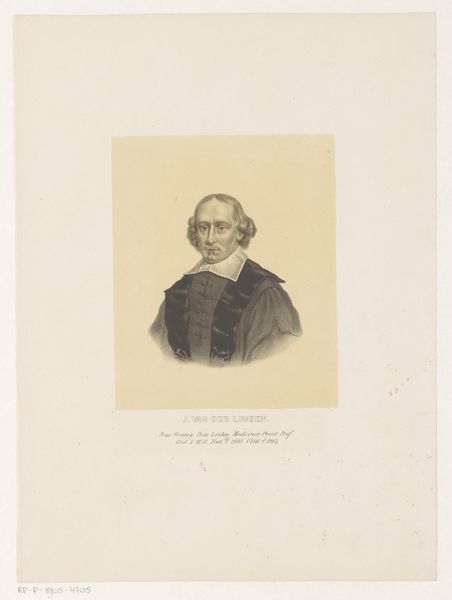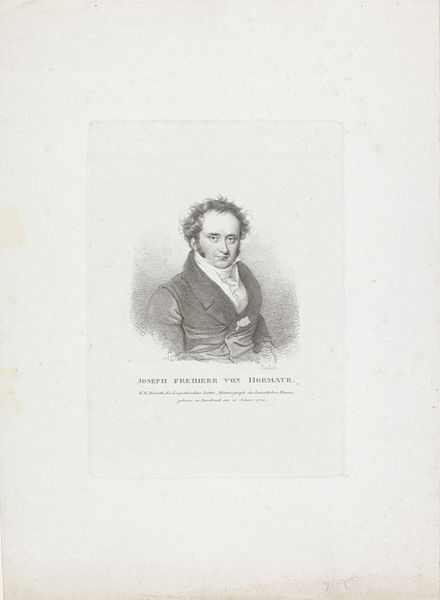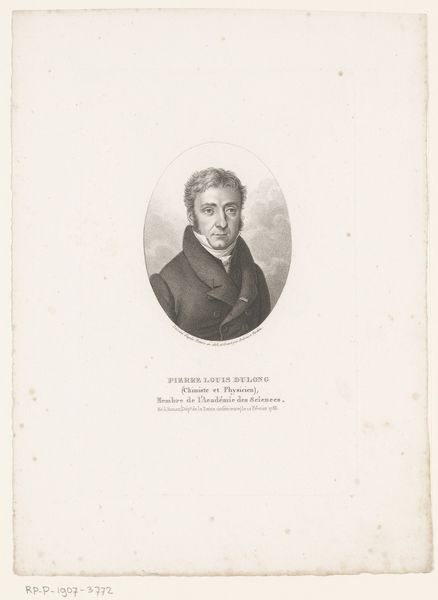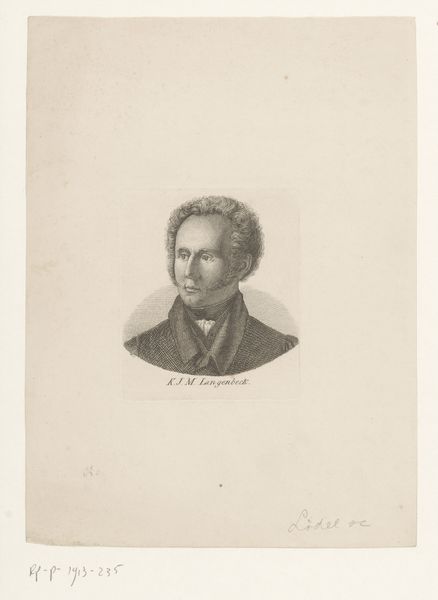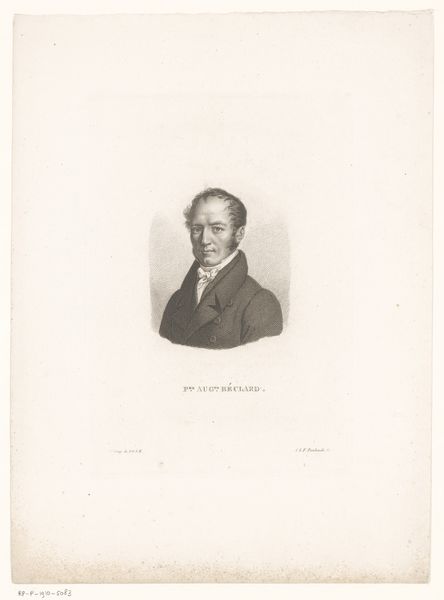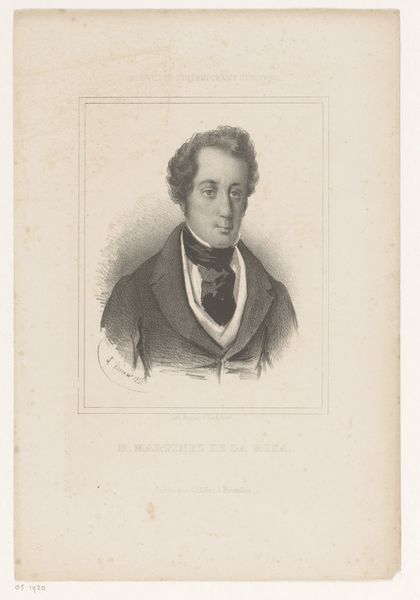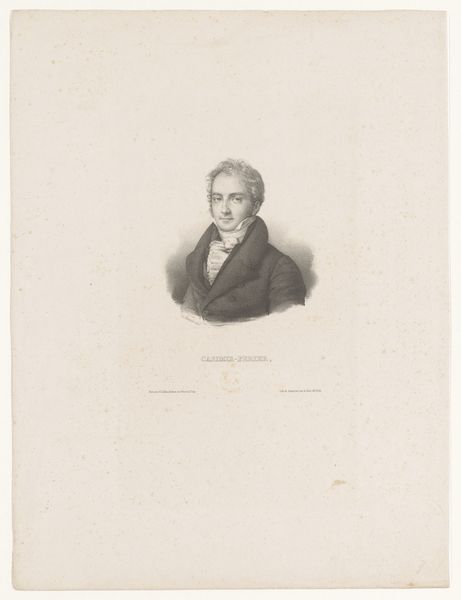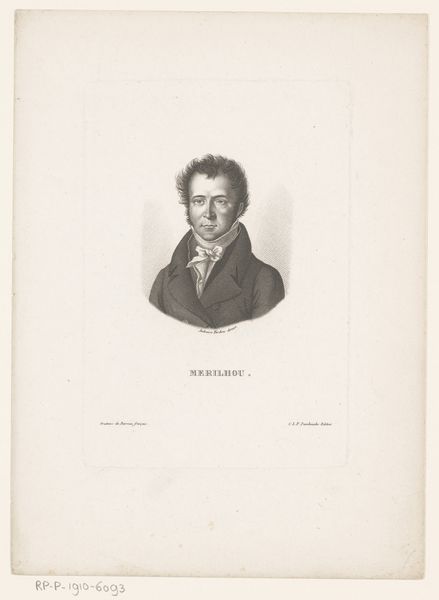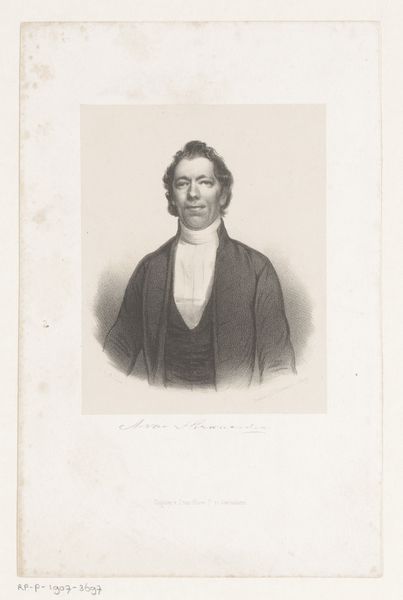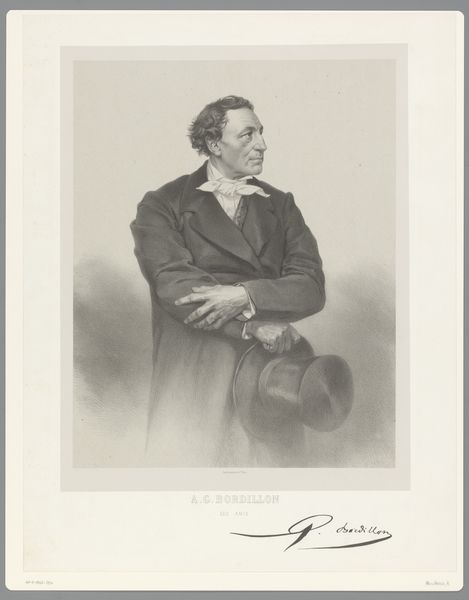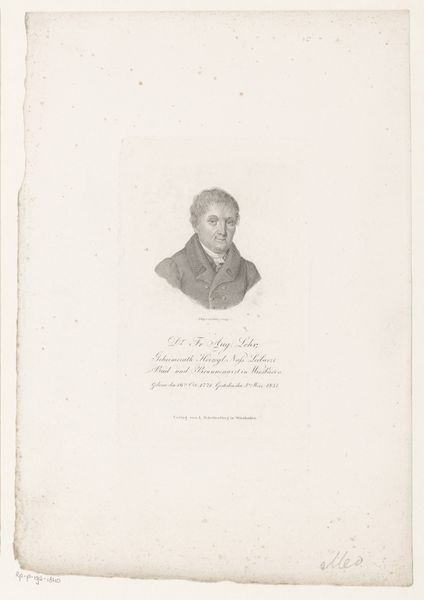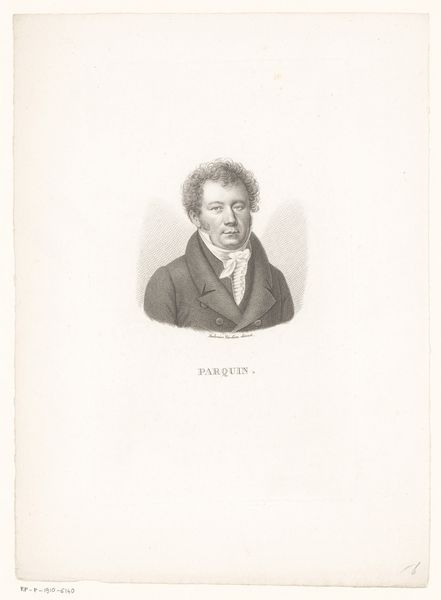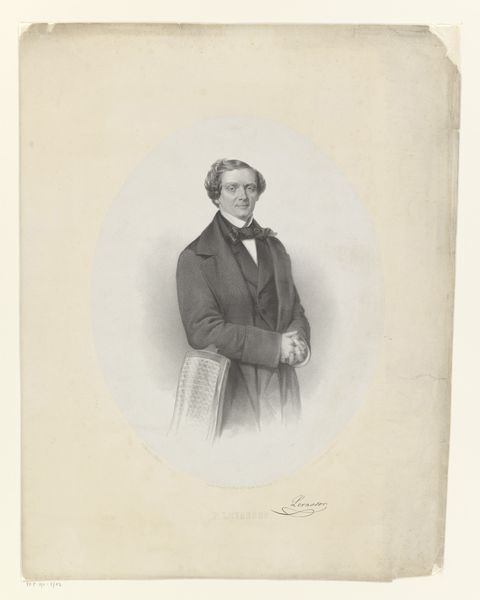
engraving
#
portrait
#
neoclacissism
#
old engraving style
#
pencil drawing
#
academic-art
#
engraving
Dimensions: height 200 mm, width 146 mm
Copyright: Rijks Museum: Open Domain
Editor: This is Charles Aimé Forestier's "Portrait of Francesco Rossi," made sometime between 1818 and 1832. It's an engraving. I'm struck by how it manages to feel both incredibly detailed and slightly ghostly at the same time. What catches your eye when you look at it? Curator: Ah, Francesco Rossi staring out across the centuries… I'm immediately drawn to the *weight* of history in an engraving like this. Can't you just imagine Forestier, with his burin, meticulously carving each tiny line into the metal plate? It’s like capturing a soul, a fleeting moment, but grounding it in something permanent. Editor: The "soul" of the sitter. I hadn't thought of it that way. Curator: Consider Rossi’s profession—anatomist and surgeon! Those were frontier jobs back then, steeped in curiosity, pushing boundaries. Does that influence how we perceive this rendering of his likeness? His intelligence seems to glare in that portrait. Editor: Definitely! Knowing that he was a surgeon gives the image a bit of an edge, doesn't it? It's more than just a portrait; it's a glimpse into the mind of a person dedicated to exploring the body and the possibilities within the practice of medicine. Curator: And look at the Neoclassical elements—the calm, ordered composition. Forestier created more than just a record of a person; it's a declaration of Enlightenment values: reason, observation, and progress. Did we both get a sense of that just looking at this old print? Editor: I hadn't considered the historical values it was evoking, but that's such a good way of looking at it! So it becomes more than just a likeness but more a time capsule that blends art and also, science? Curator: Absolutely! Perhaps these were my presumptions all along, since art offers a conversation from one mind and hand to another. It speaks when silence fills a void of questions from deep antiquity, echoing through our imagination across centuries. Editor: That's something I will keep in mind with every portrait I'll look at in the future.
Comments
No comments
Be the first to comment and join the conversation on the ultimate creative platform.
